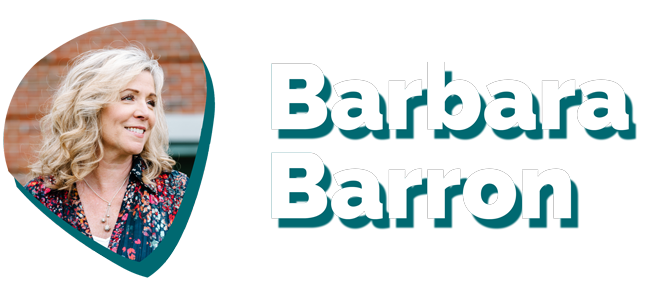January 27th, 2021 by Barbara Barron
What if you had the chance to secure a significant, maybe even transformational gift from a donor at an amount far beyond what they give annually? One that rivals their largest gift ever or even…their cumulative giving?
Interested?
But what if you knew from the outset that the pledge would not be fulfilled for several or even many years? Would you still be interested? How about if this gift came within a contractual agreement? Now would you accept it?
I believe you would. I know I sure would.
What is this type of gift? It was new to me, too, until recently. I became familiar with using permanent life insurance as a method to make such a stretch gift possible for me – as a donor! I fell in love with it as an idea.
And now, having done this, I want to share the technique so you can use it to benefit some of your donors and your long-term development program.

Quick backstory: I serve on the Board of an international art organization. (Cambodian Living Arts, so great!) As we were in the early planning stage of our capital campaign, I knew I wanted to make a pledge that was meaningful to me and the organization, and would help move us towards our campaign goal. But, of course, I am not in a position to make an outright six-figure pledge right now. But with the help of my financial advisor and career life insurance professional husband – thank you, Mark! – I learned how I could make that level of commitment by using a permanent life insurance policy.
Don’t panic! When discussing insurance as an idea, it’s easy to get lost in the details. For the purposes of sharing this technique with you, I am going to do my best to keep the description of this gift tool at the 10,000-foot level.
However, if you are interested in the deeper dive, I am including some links at the end of this article to give you more granular detail and some helpful info. But I don’t want to scare anyone off. So let’s stay at cruising altitude and focus on the benefits of this approach.
I’ll use my gift to illustrate.
My wish was to pledge $100,000 to the campaign. That is far and away the largest gift I have ever considered giving. Ever. And I’ve worked for some outstanding organizations that I care deeply about! I never knew what I might be able to do. Until now.
How to do it? In short: I purchased a permanent life insurance policy for $100,000. The owner of the policy and sole beneficiary is my chosen organization. That’s key. They own it. Every year, they will pay the premium, but I will add that amount to my annual gift so they are not out of pocket. That means no impact to their lean operating budget. And when I die, whether it be in 3 months or 30 years, the $100,000 gift will come to my organization. The beneficiary here is a non-profit, so there are no tax consequences.
But since we hope – at least, I hope we hope – there are actually 30+ years more to my life, here’s an additional cool part of this type of gift: because it is a permanent policy, cash starts to accrue in the policy as I am paying the premium. That cash also belongs to my charity — since they own the policy! And it sits on their balance sheet as the asset it is. So cool. And lastly, they get to choose if they want to use the cash or borrow from it for some large investment, like the purchase of property or another important initiative. It’s theirs to do with as they please.
Have you subscribed to the newsletter yet? It only takes a minute.
We tracking so far? “What about the risks?” you ask. A good question!
The risks, as I understand them, are minimal for the owner and beneficiary. Let’s say that I – or your imaginary future benefactor – were to bail out, drop off the map, and stop paying the premium. What happens then is that the charity can decide to continue to pay the premium itself, in order to keep the policy in force (and ensure they get the $100k at my death). But they could also decide to reduce the amount of the policy to something more manageable to maintain. Or, lastly, they could cancel the policy altogether and move the cash value into the general account and operating budget.
Meanwhile, how about the benefits? For starters, my charity can contractually count on $100,000 at some distant moment — and actually see the plan’s equity grow on their balance sheet as a long-term asset. They can tell other donors that they have secured another $100,000 donor. (Huge.) And this gift, unlike a legacy gift promise, cannot be changed by the donor once it’s put in place. (If you’ve ever had this happen you, you know how reassuring that is.)
For organizations that embed this strategy into their Major Gifts and Endowment campaigns, it is possible, using long-range predictive modeling, to estimate future gift maturities and incoming insurance cash flows for planned program expansions and facility improvements. Think about how wonderful is to be able to plan, long-term.
Okay, so finishing up, here. How about the benefits to me as the donor? Are there any? Of course! For one, I feel enormous pride in having made this commitment. And as a result, I feel even more invested in the work of this organization and its bright future. They can (and will) treat me as the major donor I now am. Not my main driver but nice, anyway.
In closing, there are some important things to bear in mind with this technique. Not everyone will be eligible to provide this gift, depending on their health status. This little caveat makes me think of the old adage:
“We purchase life insurance with our money, but we buy it with our health.”
In other words, for healthy and – typically – younger people, this is an inexpensive way to leverage-up and make a really large commitment, at a discount. Far too many young parents don’t have life insurance but should. Perhaps, as they are introduced to this opportunity, we can help them see how they can protect their families and also make a long- term gift to your school. An important win-win.
And let’s not count out the older generation. Many more “seasoned” donors, if healthy, can possibly leverage their legacy gift by using a life insurance gifting plan.
I’m sure you can see by now how this kind of gift takes your advancement program to the next level. Experienced donors will appreciate the sophistication when you bring it up. (I’d bet you they never considered such a thing was possible.) Finance committees will deeply appreciate the long-range revenue planning this creates. You, the advancement professional will have another substantive conversation to engage key donors. So I urge you to share the concept with your CFO and finance committee so they can come to fully understand it. And while personally I am no expert in life insurance, I am fortunate to have access to someone who is world class. There is likely someone in your community with these skills and experience, too. She or he can help you see and share now this technique can elevate a donor’s giving to new heights.
I am also happy to talk about it with you. (I really do have an open door policy!) Meanwhile, thank you for all you’re doing.
For those interested in the deeper dive, here are some resources to read and share:
- Mass Mutual – “How to Use Life Insurance for Charity”
- Forbes – “2 Ways to Combine Charitable Giving and Life Insurance”
- CCIM – “Charitable Donations of Life Insurance”
About the Author
Barbara Barron is one of the most respected and highly sought-after independent advancement professionals in the country, having worked with dozens of schools in every corner of the United States. She has raised over $20 million for schools where she served as the Director of Development
Barbara is a New York Times bestselling author, speaker, and presenter who currently advises dozens of schools in various capacities. She is considered a thought leader in the world of advancement, with her writing widely shared by professionals in development offices worldwide.
She can be reached via email at [email protected]







